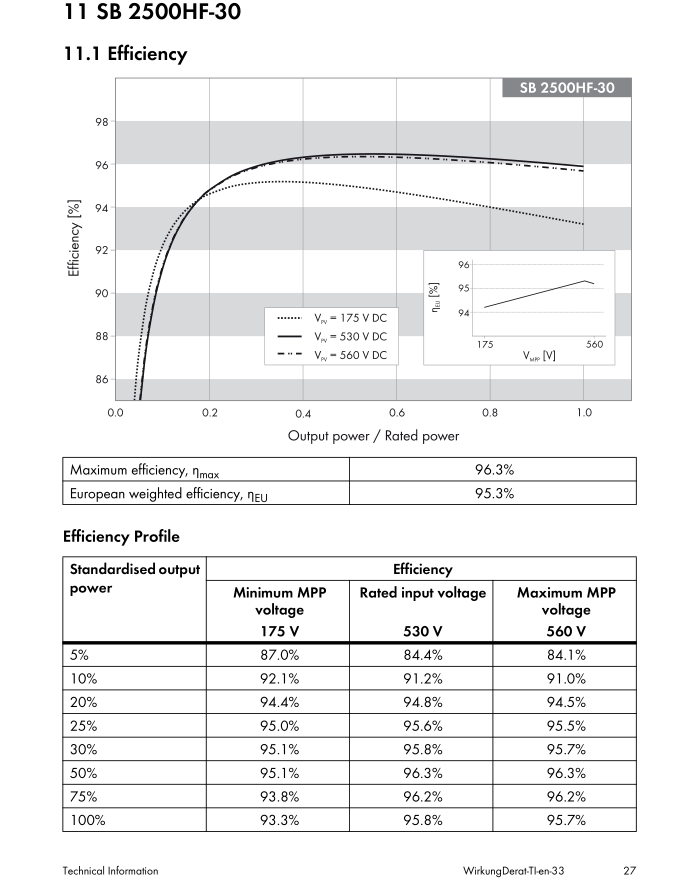Reading and understating the data sheet of the big RS shows, that the device is composed of input and output circuit. The input circuit has absolute Limit of 450 Volts while the output circuit is limited to 200 Ampere.
Connected to a 48V battery, the maximum output power is 200x48 = 9600 Watt while the datasheet shows a maximum of 11520 Watt. The reason for this diffrence is shown in the maxium voltage for 48V battery what will be calculated from 11520 W / 200 A = 57,6 Volt. This is the same voltage given in datasheet for maximum constant battery voltage.
Further we have to regard the maximum input values in calculations. My panels have a nominal voltage of 41,7V at 10,36 A what makes 432 Watt at the condition of STC illumination what are 1kW/m² at 25 degree celsius.
Unfortunately, the datasheet shows a maximum input voltage of 8x battery float voltage with VOC what is the open circuit voltage of the panel array. As the default float voltage is 57,6 Volt, the maximum string VOC will be 460,8 Volts. This already violates the maximum input voltage of 450 Volt why we only have to take the 8x VOC limitations in account for float voltages smaller than 56,25V.
For the reason of typical high intrinsic resistance, my panel datasheet shows a open circuit voltage of 49,8 Volt max what makes 398,4 Volt for a 8 panel series string. For that voltage, we could lower the floating voltage down to a minimum of 398,4V / 8 = 49,8 Volts. Assume the 450V maximum limit, a series string of 9 panels with 9x49,8=448,2 Volts would be possible.
As far as we not assume a reverse polarity connection, the maximum panel short circuit currents are not taken into account. A string of 8 panels delivers a power of 398,4V x 10,36 A = 4127 Watt. This is already limited by the max 4000W per MPPT of the RS450 datasheet. Connecting the 4 inputs, this gives a input power of 4x4000W = 16000 Watt while the output circuit is limited to 11520 Watt. This would be a loss of aprox 40% or over 4000 Watt of the panel power why we should calculate the usable input power in comparison to the output power rather than the maximum input limits.
Anyhow each switching regulator has a maximum or typical efficieny what I cannot find in the data sheet. Are there any rules of thumb on how much power we have to feed into the RS450 to reach the maximum output power ?



